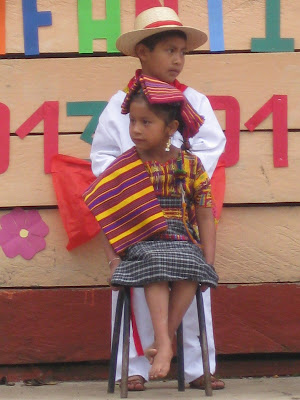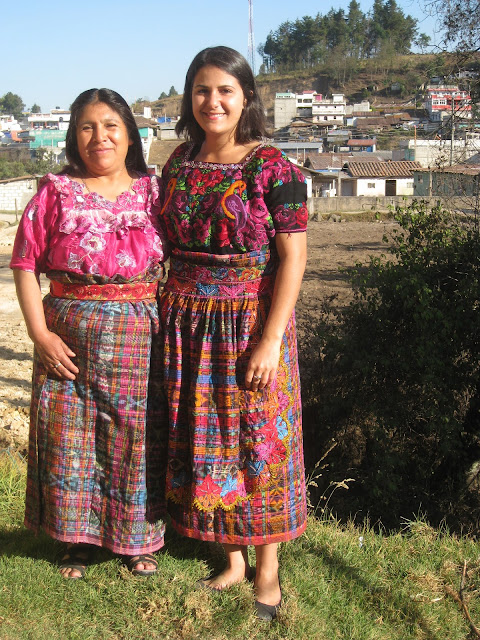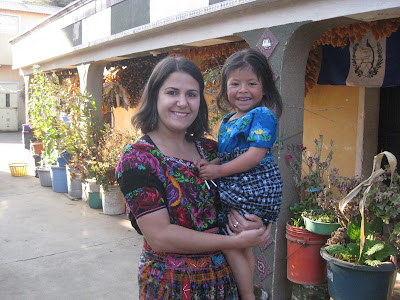One of the things that I love the most about Guatemala is the colorful Mayan clothing that is still widely used called traje (pronounced traw-hey). All female members of my last two host families wore traje. My first host family did not use traje because they are Ladino. Ladinos are the Spanish non-Mayan population within Guatemala. Wikipedia describes Ladino as:
The Ladino people are a mix of mestizo or hispanicized peoples in Latin America, principally in Central America. The demonym Ladino in Spanish, deriving from "latino" and came into use in the colonial era to refer to the Spanish-speaking population.
Anyway, I am talking about the Mayan population here. My host Mom would dress me up in her trajes and we would walk around the house or around town and take pictures with her. Check out my blog post for more pictures here! Traje includes an: embroidered blouse, long wrap around skirt, belt, and usually an apron made out of the same material as the skirt and a belt, woven or cloth, that gets wound into their hair. This hair adornment comes in MANY different styles and just like the traje are distinctive to different departments of Guatemala.
 |
| Santiago, Lake Atitlan |
 |
| Santiago, Lake Atitlan |
Other popular hair styles
 |
| My host sister Meli competing at the beauty pageant at her school |




















































